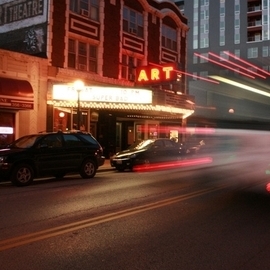The 2014 New Art Film Festival fast approaches, so my email has been a-hoppin’ with electronic conversations. What follows is a patchwork of interviews with some of the key players in this impressive local event, highlighting the work of area filmmakers in conjunction with the Boneyard Arts Festival. First up, a chat with Jason Pankoke, one of the forces behind The NAFF effort!
Smile Politely: What is the goal of the film festival, and how does this year compare to previous offerings?
Jason Pankoke: The New Art Film Festival was created to satisfy a number of modest goals. First, the NAFF presents local filmmaking as a formal component of the Boneyard Arts Festival itinerary each April. Second, through quantity and quality, the NAFF illustrates that filmmaking in Champaign-Urbana is a thriving activity. Also, the NAFF helps encourage interaction with our host venue, the Art Theater Co-op, as a valuable community resource. Finally, we try to project a positive ideal of “independent film culture”—as discussed in my DIY publications MICRO-FILM and C-U Confidential for the past 15 years—in how we stage the NAFF.
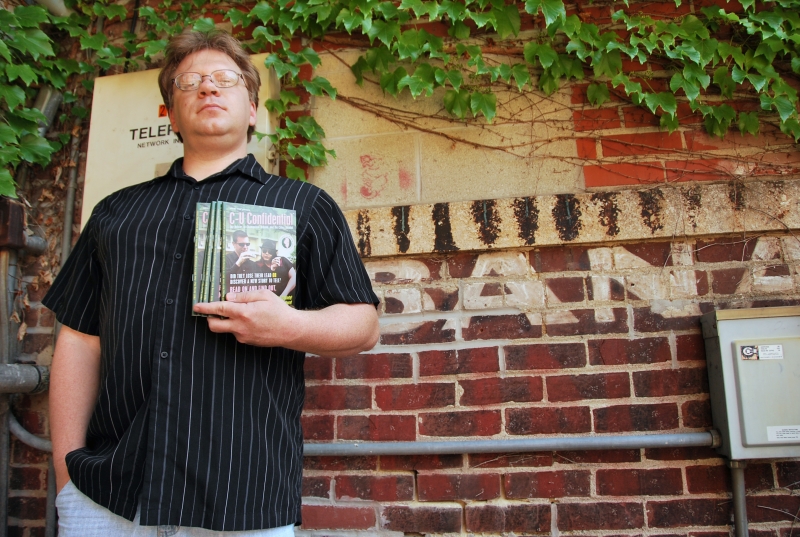
I like to tell people the movies themselves determine how the NAFF will be shaped. This year is no exception. We are showing 28 films, the largest number since our inaugural event in 2010, with a high percentage of directors and producers returning from previous years. Although we are sad to lose the “film history” presentation aspect of the past two festivals, that decision allows us room to play a feature film. It is a brand new drama-comedy called The Drunk, partly produced by Shatterglass Studios of Champaign, about an imagined grandson of the real-life labor leader Eugene V. Debs (1855-1926) getting his act together and running for office in Indiana against a political rival.
SP: What can the audience expect from the festival experience?
Pankoke: Our presentation model is very straightforward. We schedule blocks of films grouped by genre, format, or theme, and keep our live introductions on point so we can guide our audience to the good stuff quickly. This is partly determined by our single-day schedule, which does not allow much room for us to lag. As a very low-budget production, we also don’t have the means to wow our audience with star power like an Ebertfest or shower them with bells and whistles, even though Luke Boyce of Shatterglass never fails to surprise with the excellent on-screen titles he designs for us. We do our best to be a smart antithesis to the “film festival marketplace” mindset that emerged across the United States in the Nineties.
Honestly, the NAFF was not designed to echo that archetype in the first place. We look at this as a rare collective screening opportunity for our filmmakers as well as a working history of their output for the community at large to experience, enjoy, and follow. One gratifying aspect is how the filmmakers go out of their way to promote and attend the NAFF. Their energy helps fill the Art Theater no matter how many people are sitting in that auditorium during the show.
For those interested in a more intimate environment where one can readily discuss the nuts and bolts of filmmaking with NAFF filmmakers, Champaign Movie Makers will host the “NAFF Talkback” two days after the festival proper on Tuesday, April 15, starting at 7 p.m. at Shatterglass Studios. Admission to both the Talkback and the NAFF is free.
SP: For the would-be filmmakers amongst us, what tips would you give on marketing their films on the festival circuit?
Pankoke: The NAFF is not really a part of that circuit, so offering “tips and tricks” to making the cut in our event is not comparable with attempting to gain favor at a Sundance or South by Southwest. What I will do is share a few logical ideas about what might serve the filmmaker well when attempting to find an audience for their work, although fellow programmers and the filmmakers out there might have differing opinions:
Study the festivals well – Your film will not be a perfect fit for every festival out there. Take the time to look at festival programs and histories so you can effectively target where your work might make the most sense or impact.
Budget appropriately – Entry fees, marketing material, traveling, and housing should be included in your overall film budget. Festivals selecting your work would be wise to offer you hospitality at their event, but you cannot expect them to spring for the more significant costs. And, if you do receive bonus perks, especially as someone who is not a “name” in the entertainment industry, thank the organizers profusely for their generosity.
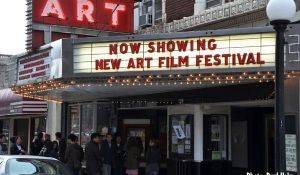 Prepare materials in advance – Film festivals want to promote and “discover” their artists, but they are not automatically doubling as a marketing firm. You should have attractive and useful press materials at the ready when you begin the submission process. These might include: a well-written film summary, production history, and/or participant biographies; high-resolution head shots, still images, and/or behind-the-scenes photos; nicely designed title logos or poster graphics; and, easy-to-access streaming video assets such as trailers or related music videos. These elements should be easy to deliver through e-mail, via download, or on disc.
Prepare materials in advance – Film festivals want to promote and “discover” their artists, but they are not automatically doubling as a marketing firm. You should have attractive and useful press materials at the ready when you begin the submission process. These might include: a well-written film summary, production history, and/or participant biographies; high-resolution head shots, still images, and/or behind-the-scenes photos; nicely designed title logos or poster graphics; and, easy-to-access streaming video assets such as trailers or related music videos. These elements should be easy to deliver through e-mail, via download, or on disc.
Get your story straight – There is nothing wrong with rehearsing the journalistic “who, what, where, when, why, and how” in regards to the story behind your film. Be prepared to spill it concisely and on command, whether for a press interview, before a festival screening, or during a panel discussion. Verbal stumbling or absentmindedness is only charming for so long. At the same time, extended braggadocio will absolutely rub your audience the wrong way. Find an engaging middle ground in tone and detail that keeps the conversation progressing.
Be responsible – If you agreed to appear at a festival but cannot make it, let the festival know as soon as possible. If you need to deliver screening assets by a certain date and time but cannot follow through with it, let the festival know as soon as possible. Your proactive participation in shaping the festival experience will mean volumes to the festival organizers, especially if problems can be solved before they have a chance to truly begin.
Be willing to do it yourself – You spearheaded a film. You want an audience to see this film. Therefore, you owe everyone who worked on the film a valiant effort to get it seen. If you submit to festivals and get rejected by most or all of them early on, do not despair. Have plans “B,” “C”, and “D” in mind. It could mean releasing part or all of the film on-line as a tease. It could also mean setting up a local screening to generate word-of-mouth buzz. In any event, document any successes along the way. That evidence could sway festival programmers in the near future.
SP: What is your favorite offering (or offerings) this go-round, and why does it get you pumped about this year’s event?
Pankoke: We are elated to play every single work we have scheduled for the 2014 NAFF. What I’d like to do, instead of singling out specific films, is to highlight positive trends that can be gleaned from the make-up of the material we are showing…
Many will love the fact we have five music videos in the program. I don’t know why it has been such a struggle to include videos en masse up until now, but we finally achieved the milestone. (It is sheer coincidence we have five in the fifth NAFF.) All have fun and striking visual qualities, while it is interesting to compare the “paper doll” animation techniques employed in both I Should Have Loved You by Chris Eitel, with music by The Fights, and Shot on Sight by Johnnie May, with music by Mad Science Fair.
I am also interested to see how people react to the inclusion of experimental work such as David Gracon’s Ordinary Video Series films, observational pieces shot with a cell phone, and Grant Czadzeck’s Into the Glass, a surreal piece filmed on film stock. As media consumers, we are attuned to narrative communication but still have trouble processing or appreciating non-intuitive works. Exposure to brief examples like these is a good opportunity to begin looking outside the box in terms of our film-watching expectations.
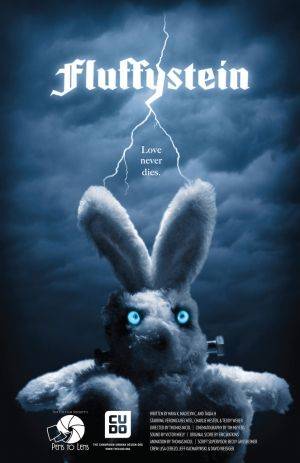 Some of our selections were originally developed for other events in the Champaign-Urbana area. Fluffystein (CUDO poster at left), directed by Thomas Nicol, and Tunnel to Greenland, directed by Anne Lukeman, are two of the nine shorts created from scripts entered in the 2013 Pens to Lens Screenwriting Competition. A few others, such as Silent but Deadly directed by Andrew Gleason and The Light directed by Tim Meyers, were first produced for the Freeky Creek Short Film Festival in the fall. As products of year-round activity in the C-U, they would not exist without the strength in numbers our filmmaking scene enjoys right now.
Some of our selections were originally developed for other events in the Champaign-Urbana area. Fluffystein (CUDO poster at left), directed by Thomas Nicol, and Tunnel to Greenland, directed by Anne Lukeman, are two of the nine shorts created from scripts entered in the 2013 Pens to Lens Screenwriting Competition. A few others, such as Silent but Deadly directed by Andrew Gleason and The Light directed by Tim Meyers, were first produced for the Freeky Creek Short Film Festival in the fall. As products of year-round activity in the C-U, they would not exist without the strength in numbers our filmmaking scene enjoys right now.
Apart from being a compelling tale of strong wills colliding and good judgment prevailing, The Drunk is a solid example of various resources coming together in the Midwest to make an independent movie. Many key players in the production traveled from Champaign-Urbana, St. Louis, and Chicago to Terre Haute, Indiana, in order to work on The Drunk. Its producers and co-stars, William Tanoos and Paul Fleschner, are Terre Haute natives based in Los Angeles.
Aspiring filmmakers would also do well to check out the short-form documentary Sriracha directed by Griffin Hammond of Bloomington, Illinois. It is a true underdog story on two levels, both in its content – the unlikely success story of a Vietnamese immigrant and his unique hot sauce condiment – and its own production, the result of savvy self-promotion mixed with mad Kickstarter skills to gain the resources for Hammond to make the film he wanted to make.
Finally, what gets me pumped about the fifth annual New Art Film Festival? All the cool locally-made cinema that will speak for itself on the Art’s silver screen come Sunday, April 13, 2014!
Jason has done a great job talking in depth about the festival! Here’s a rundown of the schedule for Sunday:
5 p.m. Introduction and Documentary shorts: Ordinary Video Series #1 and #3: “Images for the Airport: and “Hardcore Will Never Die, directed by David Gracon; Death Work, directed by Angela Aguayo; Losing an Enemy, directed by Will Hagel and Joe Hood; and Sriracha, directed by Griffin Hammond.
630 p.m. feature #1: The Drunk, directed by William Tanoos and Paul Fletcher.
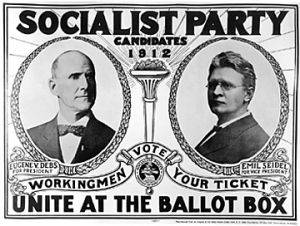 The Drunk is the story of Joe, the hard-drinking grandson of Eugene V. Debs, a legendary labor leader. Joe is arrested for drunk driving and then runs for Governor of Indiana against the corrupt prosecuting attorney and long-time family rival, Bruce Frye.I had the opportunity to correspond/chat with one of the film’s directors, William Tanoos about the project.
The Drunk is the story of Joe, the hard-drinking grandson of Eugene V. Debs, a legendary labor leader. Joe is arrested for drunk driving and then runs for Governor of Indiana against the corrupt prosecuting attorney and long-time family rival, Bruce Frye.I had the opportunity to correspond/chat with one of the film’s directors, William Tanoos about the project.
SP: What inspired you to film this project?
William Tanoos: For filmmakers seeking to create their first project, it’s important to focus on something that can both inspire internal creativity and further explore a personal passion, which often go hand in hand. For me, this project spoke to the political message I wanted to portray, not on an ideological level, but more as an exposé on our present political culture and the often predatory nature it. To be able to link a real-life political figure from my hometown and tie his well-known struggles with the present-day fictional character in the film was an exciting exploration into human behavior, and what motivates people to do sometimes very ugly things, which from their perspective may be noble and justified.
SP: Who is the main influence in your film making process?
Tanoos: I think it’s important to seek and utilize multiple influences that strengthen different skills within your scope of the process that ultimately should mold your own unique vision and style. Many of my favorite filmmakers will often cite many of their predecessors as influences — sometimes having one or two that predominate — but always willing to absorb the many talents before them. To me, Woody Allen represents a filmmaking career I greatly admire. To be able to churn out a movie per year with the creative control he desires, and often having the ability to effectively act in them as well, creating some of the most memorable characters (albeit usually just a slightly different take on the same one!) in movie history, is truly remarkable. I love his exploration of relationships and broad existential questions. I enjoy his technique, with his heavy use of wide master shots and long continuous takes. He’s arguably one of the best screenwriters of all time. And, when you get down to it, he’s just absolutely hilarious. I am also heavily influenced by Martin Scorsese and Oliver Stone. Their films are often seen through a more cynical and dark prism than Woody Allen’s, and with very different styles. But, they tackle the same issues of morality and society’s juxtaposition with a character or entity’s questionable virtues that I think is one of film’s most important responsibilities and contributions to our culture.
 8:30 p.m. Narrative Shorts I: Carrot Corn, directed by Thomas Nichols; Stardust, directed by Mike Trippiedi; Tunnel to Greenland, directed by Anne Lukeman (pictured, left); Imaginary Pancakes, directed by Smile Politely’s own Jeremiah Stanley; The Hobo, directed by Andy Due and Dustin Tylman; The Art of Pulling, a music video for Elsinore directed by Chris Sotelo and Oliver Peng; detachment, directed by Robin Berthier; Better than Yesterday, a music video for Sun Stereo directed by Matt Harsh; Fluffystein, directed by Thomas Nicol; I Should Have Loved You, a music video for The Fights directed by Chris Eitel; and Silent, but Deadly, directed by Andrew Gleason.
8:30 p.m. Narrative Shorts I: Carrot Corn, directed by Thomas Nichols; Stardust, directed by Mike Trippiedi; Tunnel to Greenland, directed by Anne Lukeman (pictured, left); Imaginary Pancakes, directed by Smile Politely’s own Jeremiah Stanley; The Hobo, directed by Andy Due and Dustin Tylman; The Art of Pulling, a music video for Elsinore directed by Chris Sotelo and Oliver Peng; detachment, directed by Robin Berthier; Better than Yesterday, a music video for Sun Stereo directed by Matt Harsh; Fluffystein, directed by Thomas Nicol; I Should Have Loved You, a music video for The Fights directed by Chris Eitel; and Silent, but Deadly, directed by Andrew Gleason.
Chris Sotelo, director of the short film/music video for Elsinore’s “The Art of Pulling,” recently spoke with Smile Politely’s Katie Baldwin Prosise about his project and process. You can view that interview here.
10:15 p.m.: Narrative Shorts II: Dead Therapy, directed by Jeff Kacmarynski; The Light, directed by Tim Meyers; Ship Your Face, directed by Chris and Anne Lukeman; A Bear in the Woods, directed by Thomas Nicol; Shot on Sigh,t directed by Johnnie May: Deadly Embrace, directed by Alaric Rocha; Still, a music video for Megan Johns and Moonwish directed by Matt Harsh and Sam Ambler; Into the Glass, directed by Grant Czadzeck; Across the Way, directed by Shan Peng: and Up the Creek, Episode #9, “What We Drink,” directed by Joe Taylor.
Visit the Art Theater Co-op website for more information on this amazing local film event, and make plans to spend your Sunday with some of the most talented people in town.








